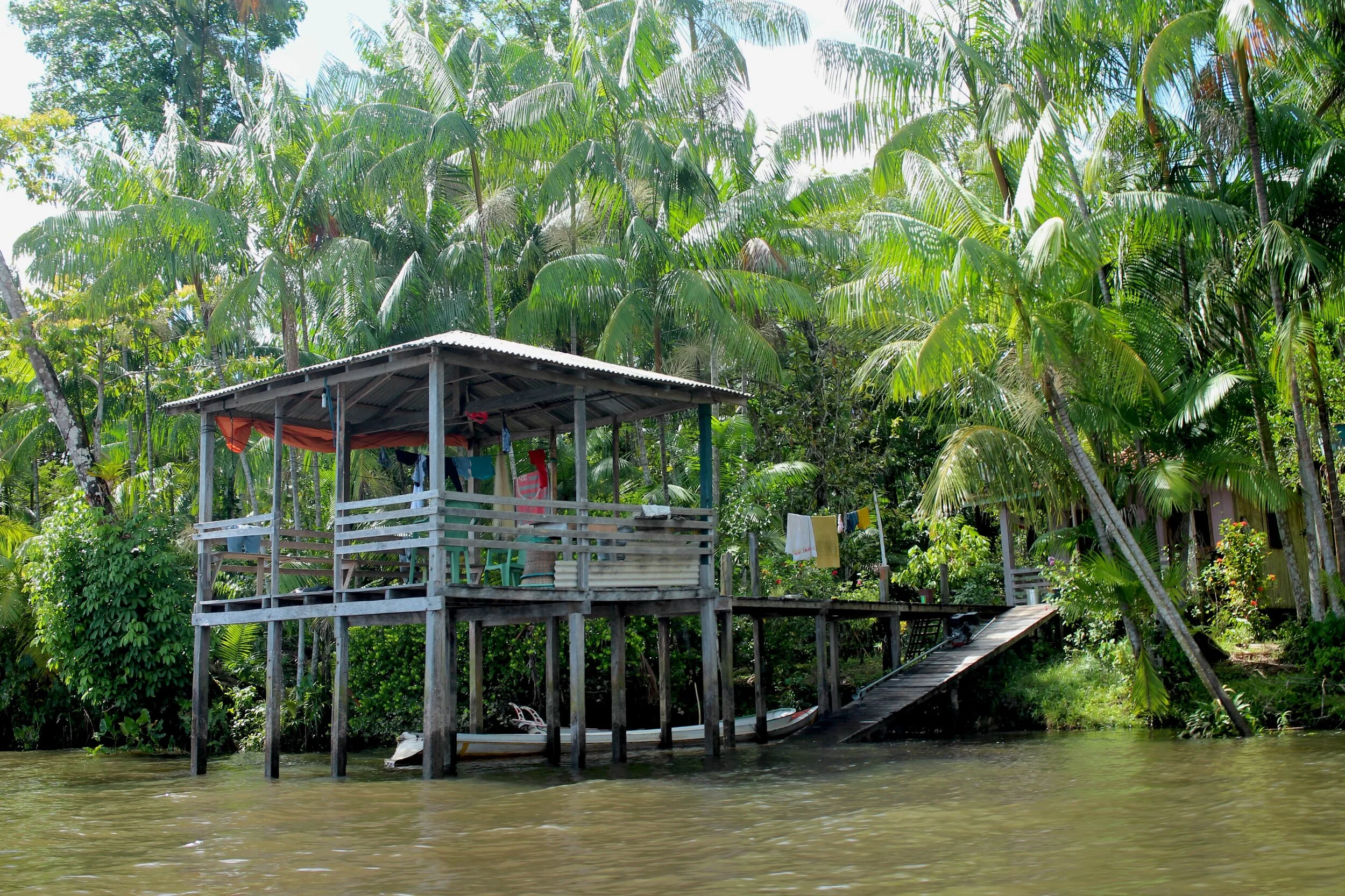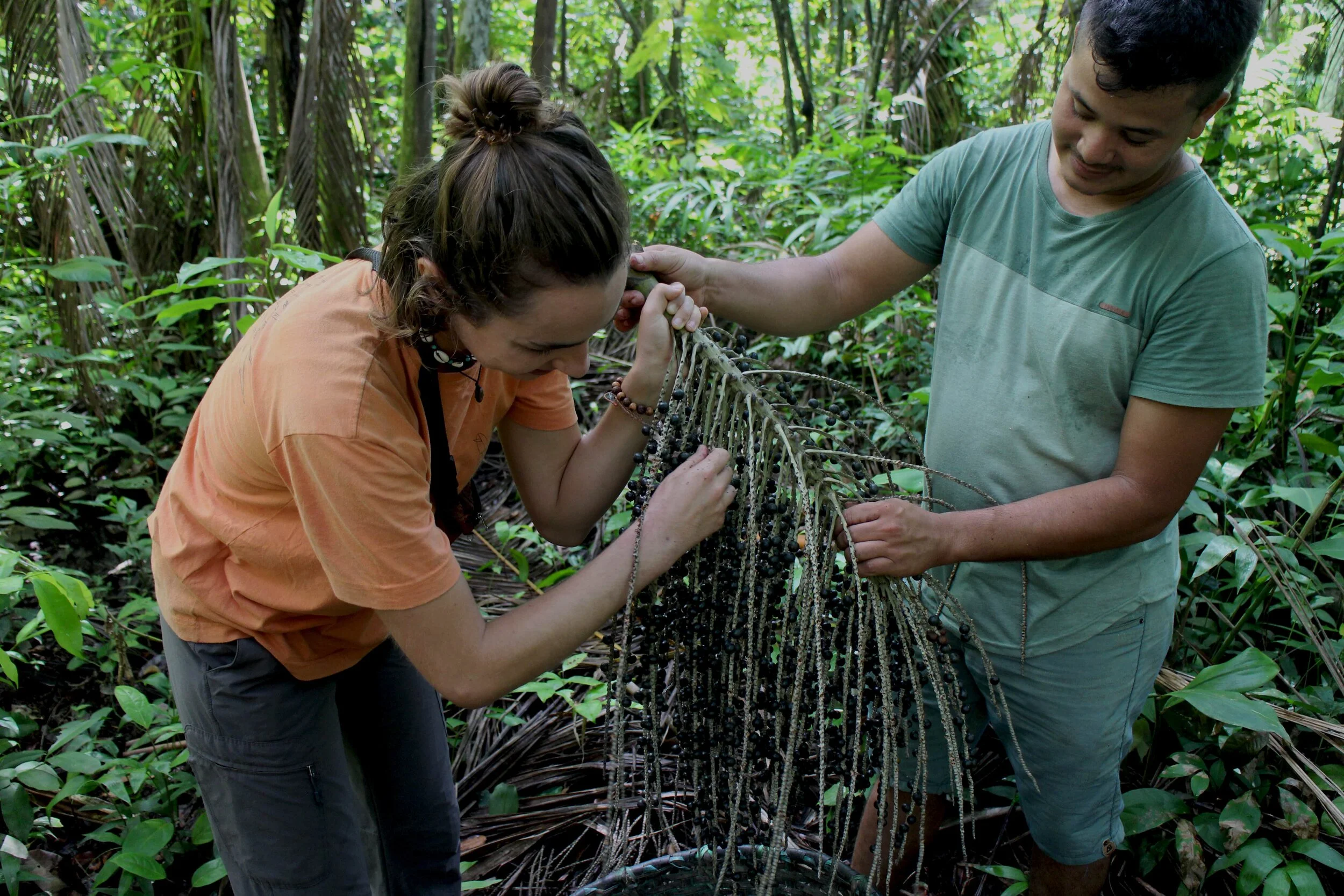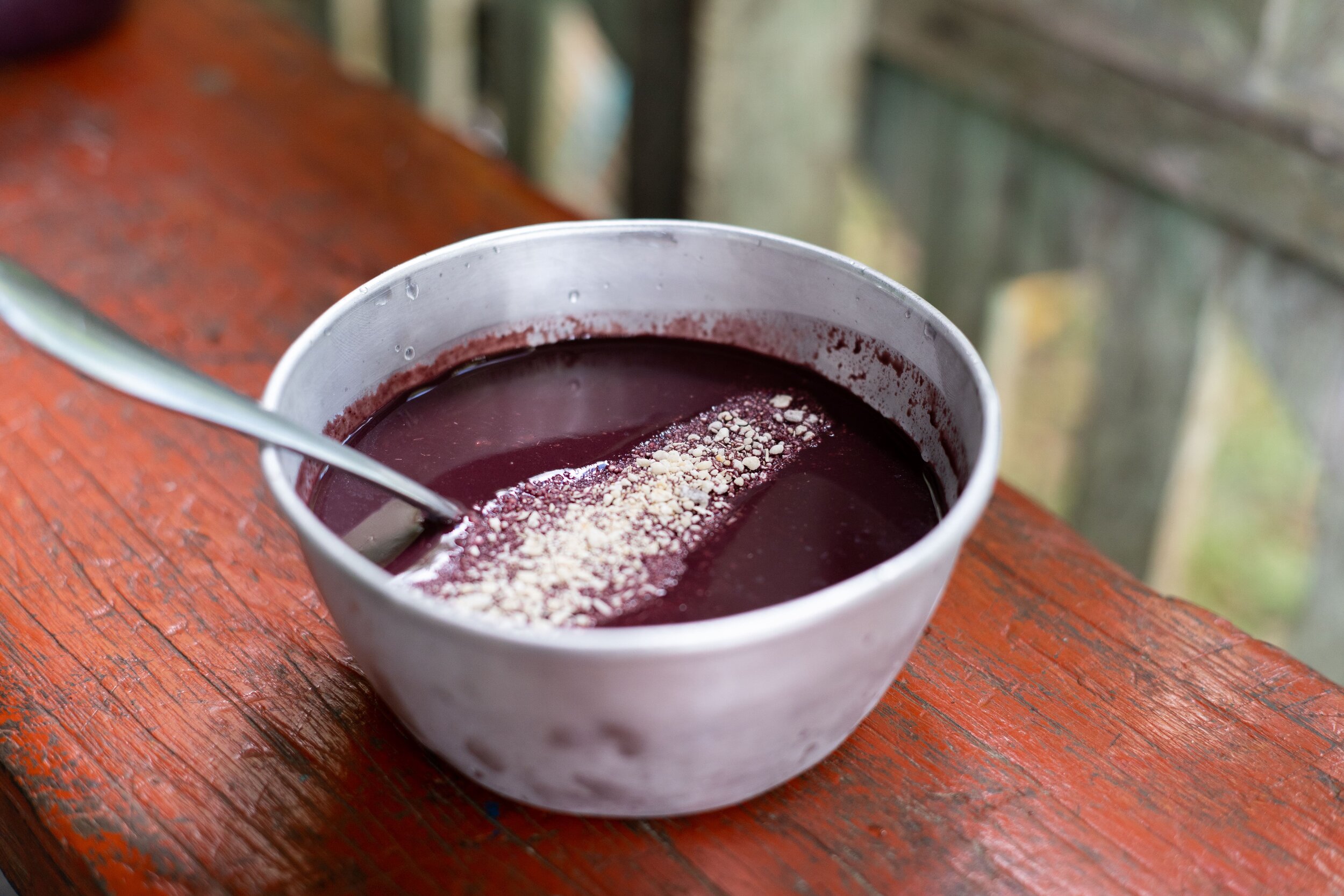The journey into the jungle
Jostling through the colourful bustling city of Abaetetuba with anticipation for the journey ahead, we venture through streets lined with merchants selling a wide array of vibrant tropical fruits, drinks and Amazonian produce. The air is hot and heavy. The sun is bright, and we are on a mission to find wild grown açai. We chat to some stall owners on route to the docks and we are persuaded to buy some açai mingão, açai porridge. When in Rome eh? We take our breakfast and wind between the calling vendors and chattering people over the concrete streets and to the end of a wooden jetty. The docks are overflowing with brightly painted canoes lined up and ready to disperse amongst the estuaries of the river Amazon. We are at the mouth of the one of the longest rivers in the world. A momentous place on an ordinary day, where life is active, busy, and filled with entrepreneurs, purchasers and curious bystanders.
We board a small red motor-powered canoe and drive out over the wide, open river. We reach the other side, and what appears from a distance to be solid jungle, is in fact peppered with small openings of meandering channels which spread through the expanse of jungle like the veins in a leaf. We head for an opening and enter a small estuary which is about 20 metres wide. The riverside is home to occasional wooden jetties and open-faced multi-coloured wooden houses.
The natural ebb and flow of the river has exposed the banks in some places to uncover thick light-brown roots which twist and overlap one another, starkly pronounced against the darker clay beneath and appearing to hold the boundaries of the earth in place. Above, the forest is densely packed with thick vegetation, arching palm trees and a variety of fronds which reach up high and lean out from the forest over the river, as if bursting from the jungle. The sound of insect life hums over the water, swirling together with the sounds of the rushing wind and the vibrations of the engine. Birds flit and occasionally swoop down to glide over the water, hunting their prey. The whole community is visible from the river, with signs, front doors, and jetties like open arms to the river access, the only road into town. We continue down the estuary for about 20 minutes until our destination is sighted.
As the engine silences, the air stills and the boat glides towards an eggshell-blue wooden pier where we are surrounded by splashing children playing in the water. Everyone gathers to welcome us and help bring the supplies brought from the city. The house is open and airy, sheltered, and shaded, with many interconnecting sections and several buildings and rooms linked via a network of wooden bridges raised above the rich clay earth on short wooden stilts. Albeit only a few feet above the floor, the setting gives the effect of a small tree-house village raised amongst greens, browns and yellows with wooden-bedecked and natural materials.
The jungle journey starts at the back door, where we are met by a cacophony of sounds. The forest is alive. And noisy! I take a moment to consider the thousands of species within short reach of us. Above, below, and all around us life continues its raucous pursuit. The floor is overflowing with plants and the canopy stretches high above with a myriad of crisscrossing flora. We step and meander through thick vegetation, heavy air and buzzing mosquitos, carefully placing each step wary of the potential dangers underfoot. Considering the wild, exotic and sometimes poisonous species whose homes we are tromping through.
Not long and we see the first açaí tree, where we stop and wait for Maelton to assesses the fruit’s maturity. He then places a piece of circular rope around his ankles, wraps his arms around the tree (with machete in hand) and practically leaps up the tree with gravity defying ease to the dizzying heights of over 40 feet. At the top he uses his machete to sever an açaí frond from beneath the fanning leaves of the palm, and then slides down the bare trunk moments later. The frond, and its connected berries, are passed to the team below where we carefully set about stripping the berries from their long tendrils, pulling them in a downwards motion into a woven basket for carrying them back to the house.
After several trees, plenty of bushwhacking, and our baskets bristling with açaí, we cut our way back though the forest for a well-deserved rest (for some of us) and a bowl of freshly caught açaí, extracted in the home of the fruit itself.
Bowl of fresh açaí, with a traditional farofa topping (toasted cassava flour)




